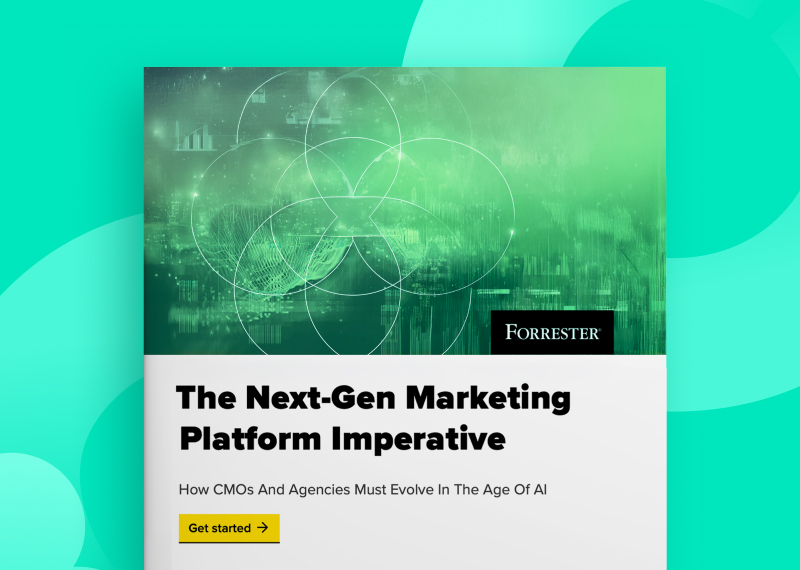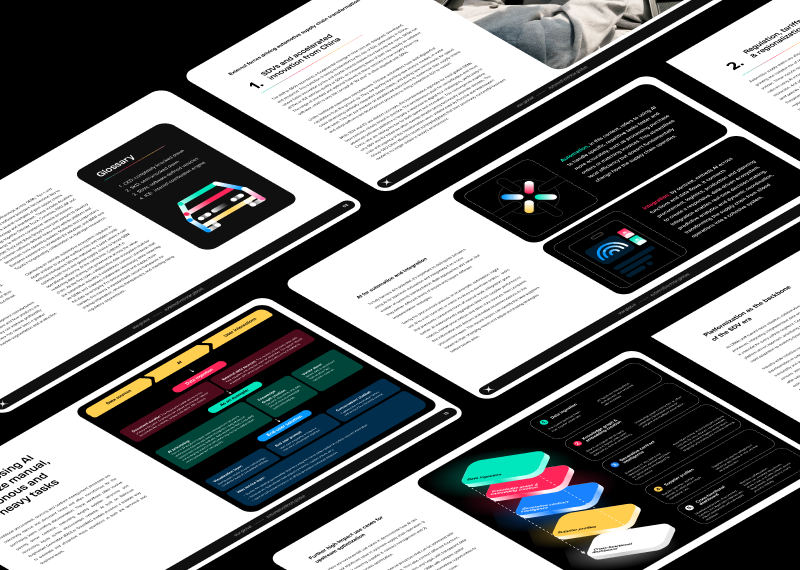As generative AI advances, so do the labels. From SaaS solutions to consumer electronics, there's no shortage of AI-first, AI-enabled, AI-embedded or AI-powered labels. They sound similar and often get used interchangeably for marketing purposes, but they represent very different approaches when it comes to building platforms and products.
With AI adoption accelerating across every industry, it’s more important than ever to understand what these terms actually mean, because the distinction has real implications for technical implementation and long-term business value.
AI-native vs AI-enabled platforms
My colleague Olia Dehtiarova offers a helpful distinction between AI as a feature and AI as a product—a framing I often return to. The same approach can be applied to platforms: some are built to exist because of AI, while others simply benefit from it.
AI-native means AI is defined to the core of the system, not bolted on after the fact. Unlike conventional approaches that retrofit AI onto existing infrastructure, AI-native platforms are designed from the ground up with AI as a foundational value-defining element.
By contrast, AI-enabled solutions integrate AI into legacy systems to enhance specific functions or improve performance, but AI isn't central to how those systems were originally built.
Distinguishing between AI-native and AI-enabled is especially important for platforms because it determines not just how AI features are delivered, but how the entire system learns, scales and evolves over time. A platform built with AI at its core can continuously adapt and improve, whereas one with AI layered on top has a more narrow focus in comparison.
The key characteristics that distinguish AI-native platforms include:
- AI at the core architecture: The system's architecture is designed specifically to leverage AI with data-centricity where data is actively used for AI training, inference and continuous improvement
- Model-driven logic: Core application logic is expressed through AI models rather than relying solely on traditional rule-based programming
- Adaptive infrastructure: The underlying infrastructure is designed to efficiently support diverse computational needs of AI. From a hardware perspective, it can include specialized hardware like GPUs and TPUs2, while also incorporating intelligent software layers that can modify their behavior based on user experience and changing conditions
- Continuous learning: AI-native systems are designed to learn from data, adapt to new situations and improve over time and scale “intelligence”
Strategic implications of AI platforms
AI-native platforms align closely with digital transformation goals by enabling new capabilities and business models that were not possible before. Because they are conceived with AI at the core, they can drive entirely new product or service categories and revenue streams rather than just incremental improvements.
In contrast, AI-integrated platforms support a more evolutionary strategy. They allow established businesses to enhance existing products and operations with AI, thereby modernizing user experiences and improving efficiency without a complete overhaul. This can be a faster route to show tangible results.
For instance, Adobe Photoshop added an AI-powered “Magic Eraser” to automate image editing tasks, and Zoom integrated AI for live transcription and meeting analytics.
While integrating AI into existing systems is quicker and less costly than building a platform from scratch, the scope and pace of innovation tend to be more limited. Because AI isn’t foundational to the original design, these systems often focus on point enhancements, such as automation or personalization, rather than reimagining how value is created end-to-end.

Technical implications
The technical differences between AI-native and AI-enabled platforms are significant. Understanding them is essential to making the right architectural decisions.
Data & knowledge management
In AI-native platforms, data and knowledge management are foundational. These systems require unified, clean, integrated and accessible data across the enterprise. The platform architecture is intentionally built to support continuous, real-time data ingestion, sharing and learning at every layer. This enables a constant feedback loop that powers system intelligence and responsiveness.
By contrast, AI-enabled platforms bridge existing data sources with AI components with data likely needed to be transformed out of the legacy system. Continuous data engineering work could be necessary as constant reconciliation of data formats and structures from multiple sources are needed.
Model lifecycle and DevOps integration
Another key technical difference is in model lifecycle management and DevOps pipelines. AI-native platforms incorporate MLOps (Machine Learning Operations) and AIOps practices from the early days of the the software lifecycle, meaning that there are systems in place for versioning ML models, automating model retraining, deploying models to production, monitoring their performance and handling data drift or bias issues continuously.
The development pipeline in AI-native environments shifts from a purely code-centric CI/CD to a data- and model-centric CI/CD designed to continuously apply machine learning to ML models, and to continuously integrate new data and improved models into the platform.
An AI-integrated platform’s model lifecycle is often more loosely managed in comparison. If the AI is a bolted-on component, updates to the ML model are more of a manual process or periodic vendor updates rather than part of a seamless CI/CD process. AI-integrated setups also may lack robust feedback loops if the platform wasn’t designed to collect outcome data or user feedback on AI predictions.
This makes improving the model’s performance systematically more difficult.
Architectural intent
The fundamental difference lies in architectural intent. AI-native platforms prioritize data for model training and real-time inference from inception with continuous learning being inherently built-in. It has event-driven architectures that react to changes in source systems immediately, using change data capture (CDC), event streams, and streaming transformations to maintain continuous data flow.
In contrast, AI-enabled systems are typically built by retrofitting AI onto existing infrastructure. They tend to rely on batch processing and periodic data transfers, which limits their responsiveness and ability to adapt in real time.
AI-enabled vs. AI-native: Which is right for your business
I’m not advocating one strategy over the other, but rather advocating the need to understand what you want to ultimately achieve, and then work backwards on implementing the right technology roadmap. If your endgame is to deliver incremental improvements for your business unit for your organization, then AI-integrated platform is sufficient.
However, if your business is ready to disrupt the market or defend against disruption, AI-native platform is a long-term bet. In addition, industries like healthcare and financial services needing real-time data processing benefit significantly from AI-native platforms.
The point here is that strategic intent is key.
CTOs should conduct a comprehensive AI maturity assessment to evaluate their organization's readiness across critical areas such as infrastructure, governance, talent and processes. Organizations with higher AI maturity scores and established data infrastructure may be better positioned for AI-native platforms, while those in earlier stages might benefit from AI-enabled solutions that build upon existing systems.
Ready to continue your education? Check out Star's AI Innovation Hub to learn more about AI platforms and solutions available to you.







